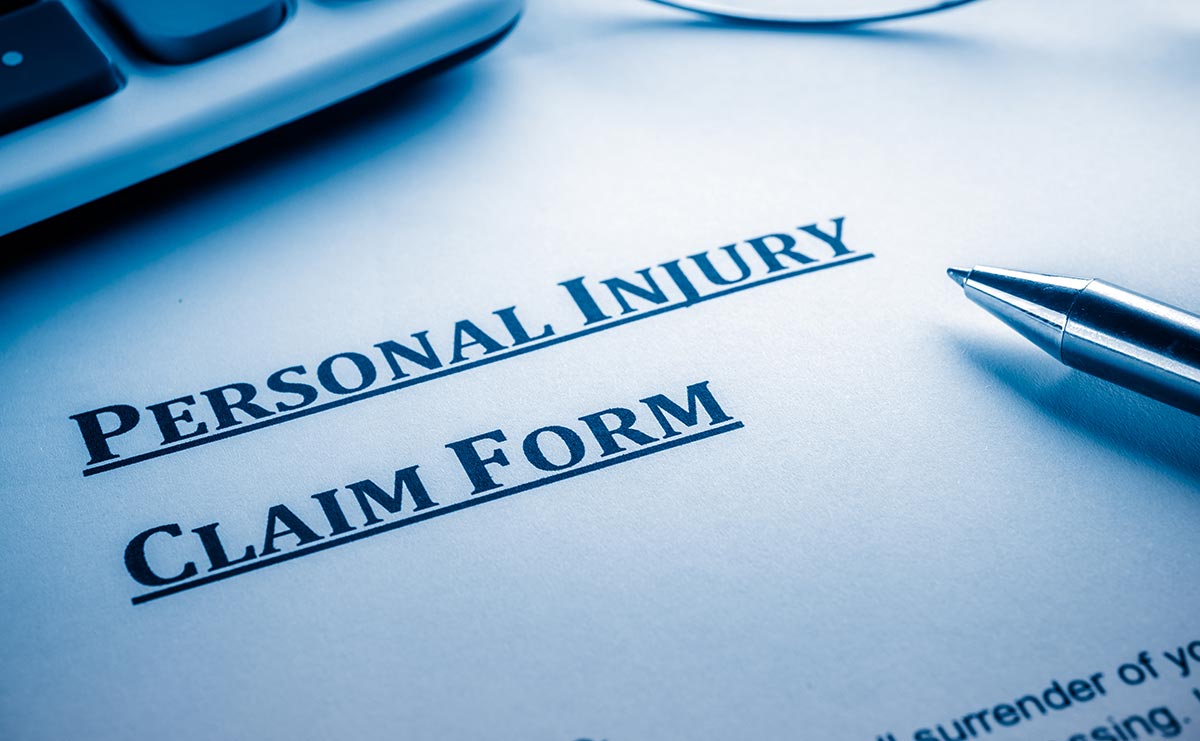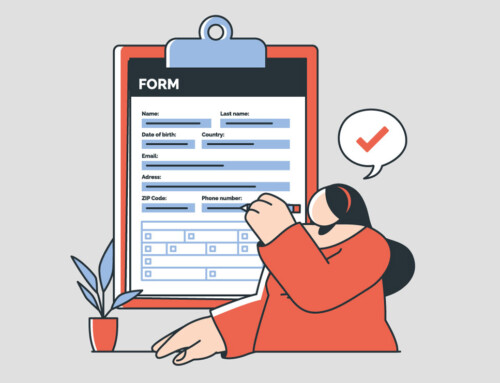Contents
Personal Injury Settlement Amounts Examples in 2025
Personal injury settlement values vary widely in 2025, reflecting the unique circumstances of each case. While massive multi-million dollar payouts make headlines, most personal injury settlement amounts examples are far more modest. In fact, about half of personal injury plaintiffs receive $24,000 or less, with the median award around $31,000 for all cases. Certain case types tend to see higher payouts – for example, medical malpractice cases historically averaged around $679,000 in payouts (median values in product liability cases were even higher). However, those figures are based on older data (circa 2005) and would likely be higher today.
This article examines average permanent injury settlement amounts in 2025 across major personal injury case types, provides 2025 settlements and verdicts, and discusses emerging trends shaping personal injury litigation. Whether you’re a legal professional, a potential claimant, or a general reader, this overview will help you understand what to expect in the current landscape.
Permanent Injury Settlement Amounts in 2025
In 2025, permanent injury settlement amounts will continue to reflect the profound, lifelong impact these injuries have on victims and their families. Unlike typical settlements for moderate or temporary injuries, compensation for permanent injuries often reaches significantly higher figures due to ongoing medical care, lost earning capacity, long-term suffering, and profound emotional distress.
While typical injury settlements average around $40,000 to $60,000, permanent injury cases frequently yield settlements and verdicts far exceeding this range. Permanent injuries—such as traumatic brain injuries, spinal cord damage, paralysis, severe burns, or loss of limbs—usually result in settlements reaching into the hundreds of thousands to millions of dollars. The substantial figures reflect not only past medical costs but also future medical expenses, necessary home and vehicle adaptations, assistive technology, and lifelong personal care.
For instance, notable 2025 cases have seen settlement and verdict amounts like:
- A refinery accident causing profound brain and spinal damage resulted in a $411 million verdict.
- A cyclist permanently injured by a vehicle received a $56 million verdict for lifelong traumatic brain injuries.
- A delivery driver with permanent third-degree burns secured a $50 million jury award.
- A patient permanently paralyzed due to medical malpractice was awarded $60 million.
These substantial payouts underscore a critical aspect of permanent injury claims: they are valued not merely by immediate medical bills or lost wages but by the comprehensive, long-term needs of the victim. Attorneys handling permanent injury cases emphasize the importance of thorough documentation, expert witness testimony, and meticulous calculation of both economic and non-economic damages. Potential claimants must understand that these cases require careful evaluation, specialist support, and strong advocacy to achieve fair compensation that reflects the lifelong impacts.
Ultimately, permanent injury settlement amounts in 2025 reflect society’s recognition of the severe harm inflicted by negligence, ensuring that victims can maintain the highest possible quality of life despite their injuries.

Average Personal Injury Settlement Amounts Examples by Case Type
Personal injury settlement amounts depend on factors like injury severity, medical costs, lost income, insurance policy limits, and jurisdictional laws. Below, we break down typical settlement ranges and averages in 2025 for several major personal injury categories:
I. Car Accident Injury Settlements
Car accident claims comprise a significant portion of personal injury cases, and their settlements span a wide range. Many minor fender-bender cases settle for relatively modest amounts – often in the low five figures (one New York firm notes that typical car accident settlements range between $15,000 and $30,000 for moderate injuries). Nationally, an analysis of thousands of cases found that the average auto accident settlement is approximately $37,200. This average is higher than the typical range because serious crashes can significantly increase payouts. For instance, accidents causing fractures, surgeries, or long-term disability often settle in the $50,000 to $1,000,000+ range. Catastrophic injuries such as traumatic brain injuries or fatalities can even lead to multi-million dollar settlements, especially if significant pain, suffering, and long-term care costs are involved. It’s also worth noting that insurance policy limits can cap the amount a victim actually recovers. If an at-fault driver carries only a $50,000 liability policy, that may effectively limit many settlements absent other sources of compensation.
The settlement value for car accidents depends on the severity of injuries (e.g., whiplash vs. paralysis), the clarity of liability, and the availability of insurance. In practice, most car accident settlements fall within the range of $10,000 to $100,000; however, every case is unique. Large outlier verdicts (discussed below) demonstrate that when injuries are life-altering, and negligence is egregious, juries and insurers may award significantly more.
II. Slip-and-Fall (Premises Liability) Settlements
“Slip-and-fall” accidents (and other premises liability cases) generally have lower average payouts than auto accidents, but they can still range widely. Many slip-and-fall claims involve relatively minor injuries (sprains, bruises) and settle for around $10,000 to $50,000. One law firm’s data suggests the average slip-and-fall settlement can be in the five-figure range (around $10,000 or more). However, these cases can escalate in value if the injuries are severe. For example, an older adult’s fractured hip or a head injury from a fall can drive settlements well into six figures. Industry statistics indicate that typical slip-and-fall settlements span from about $10,000 on the low end to $150,000 or more in some instances, reflecting factors such as the extent of negligence (e.g., a clear hazard was ignored) and the cost of long-term medical care.
Notably, slip-and-fall cases that proceed to trial have yielded high median awards in the past (median $90,000 in one study) – likely because only serious cases tend to reach a jury. In 2025, while most slip-and-fall claims are resolved quietly for moderate sums, significant premises liability cases (involving permanent injury or gross negligence) can result in substantial settlements or verdicts well above $100,000. For example, a California jury recently awarded $50 million to a delivery driver scalded by hot liquid at a drive-through, assigning full liability to the company for the unsafe condition. Such outcomes underscore that premises cases, when severe, are taken very seriously by juries.
III. Medical Malpractice Settlements
Medical malpractice claims consistently rank among the highest in terms of payout amounts. Patients injured by negligent medical care often have lifelong damages and significant economic losses, which drive up settlement values. According to the National Practitioner Data Bank, in 2024, there were over 10,000 medical malpractice payments totalling $4.33 billion – an average payout of about $423,600. This figure includes both settlements and judgments, illustrating the high cost of medical malpractice cases. Many malpractice settlements easily reach six or seven figures when involving catastrophic harm (for instance, surgical errors causing disability, missed diagnoses leading to death, etc.). The average jury trial award for medical malpractice was reported to be around $1.8 million in recent years, though few cases actually go to verdict.
For perspective, earlier data had placed the median malpractice payout at around $250,000–$285,000, but that, too, has risen with medical costs and inflation. Real 2025 examples confirm the high stakes: in New York, a jury in April 2025 delivered a $60 million verdict for a patient left paralyzed by an epidural injection error. In late 2023, another New York malpractice trial resulted in $120 million for a brain damage case. Settlements (which resolve most cases before trial) are often somewhat lower than such record verdicts; however, mid-seven-figure settlements are not uncommon for serious malpractice cases (for example, a case involving infant brain injury or severe surgical negligence might settle for several million dollars to cover lifetime care).
Malpractice settlements depend on the severity of the injury (e.g., a missed cancer diagnosis vs. a minor medication mistake), the strength of the evidence of negligence, and state laws (many states cap non-economic damages in medical malpractice cases). Nonetheless, in 2025, the average medical malpractice settlement is typically in the high six figures, and cases with egregious negligence or devastating outcomes often push well into the millions.
IV. Workplace Injury Settlements (Workers’ Comp and Third-Party)
Workplace injuries are a special category because many are handled through the workers’ compensation system rather than traditional lawsuits. Workers’ comp benefits are usually limited (covering medical bills and a portion of lost wages, but not pain and suffering), which means these settlements tend to be lower on average than general personal injury claims. According to national safety data, the average workers’ compensation settlement in recent years is around $40,000–$44,000. For example, common workplace injury claims, such as back strains or minor fractures, might settle for tens of thousands of dollars. According to a 2020-2021 study, the mean payout for all work injury cases was $41,757.
However, the range varies depending on the severity of the injury. Workers’ comp data shows that an amputation injury averages roughly $126,000 in combined benefits, and other severe injuries (like multiple fractures or burns) often result in payouts of $50,000–$60,000+. The cause of injury also matters – for instance, workplace motor vehicle accidents lead to some of the highest comp payouts (averaging nearly $90,000 per claim), likely because they involve high-impact trauma. On the other hand, more typical injuries, such as sprains, might average in the mid-five figures or less.
It’s essential to distinguish between workers’ compensation settlements and third-party personal injury suits arising from work-related injuries. Suppose a worker is hurt due to a third party’s negligence (e.g., a subcontractor or equipment manufacturer). In that case, they may file a regular personal injury lawsuit in addition to claiming workers’ compensation benefits. These third-party claims can yield much larger personal injury settlements or verdicts since they allow full tort damages (including pain and suffering). For example, in a 2022 refinery accident in Louisiana, a contractor’s employee suffered catastrophic injuries from a falling object; in 2025, a jury awarded $411 million against the responsible company. This is an extreme case, but it illustrates that workplace accidents can result in substantial payouts when negligence is proven against an employer or third party. Generally, most on-the-job injuries are resolved through workers’ comp with five-figure personal injury settlement amounts. Still, if negligence by a third party is involved, the recovery can align with other personal injury cases (potentially hundreds of thousands or more for severe harm).
Real Personal Injury Settlement Case Examples from 2025
To appreciate how these numbers play out, here are several notable personal injury awards in 2025, with key details on the case type, amount, location, and injury:
|
Location |
Case Type |
Amount Awarded |
Injury Description and Details |
|
Louisiana |
Refinery Workplace Accident |
$411 Million |
Profound brain and spinal injuries from a falling 20-pound metal bar; severe safety negligence by the employer; insurer refused pre-trial settlement. |
|
Texas |
Vehicle vs. Cyclist Accident |
$56 Million |
Permanent traumatic brain injury sustained by cyclist struck by hit-and-run driver; complications in recovery due to defendant’s insurer bankruptcy and incarceration. |
|
California |
Hot Beverage Burn Injury |
$50 Million |
Third-degree burns from scalding water at Starbucks drive-thru; jury assigned full liability to Starbucks for unsafe handling procedures. |
|
New York |
Medical Malpractice (Injection) |
$60 Million |
Permanent paralysis caused by epidural steroid injection error; compensation included extensive medical costs, lost income, and pain and suffering. |
These real cases illustrate the upper end of personal injury payouts in 2025. Naturally, they are outliers – most cases settle for far less – but they influence the negotiation strategies in many claims. Insurers and defendants know that juries can and will award such sums in egregious cases, which can motivate settlements in the mid-six or seven figures for strong cases to avoid the risk of trial.
Emerging Trends in Personal Injury Litigation (2025)
The landscape of personal injury is continually evolving. In 2025, several trends are notable in how cases are being litigated and resolved:
- Tort Reform and New Legislation: Recent law changes in multiple states are impacting personal injury claims. For example, Florida implemented sweeping tort reform in 2023, shortening the statute of limitations for negligence cases (from four years to two) and adopting a stricter modified comparative negligence standard (plaintiffs who are over 50% at fault can recover nothing). Florida’s reforms also give insurance companies more time to respond to claims without facing penalties for bad faith. In Georgia, lawmakers in 2025 passed legislation to curb “nuclear verdicts,” including rules to prevent excessive anchoring (plaintiff attorneys making extremely high initial demands) and requiring more disclosure of medical billing “phantom” damages (distinguishing billed vs. paid amounts). Georgia also moved to increase transparency in third-party litigation funding, requiring funders to register and disclose their involvement, aiming to ensure that juries are aware when outside investors finance a lawsuit. Louisiana enacted similar litigation funding disclosure rules in 2024 and aligned its standards for expert evidence with federal rules. Overall, tort reform efforts in 2024–2025 are focused on limiting liability in certain instances, discouraging frivolous claims, and reining in large verdicts (especially in regions dubbed “judicial hellholes” for their high awards). Legal professionals must stay informed about these changes, as they can impact everything from how a case is framed to the maximum damages available.
- “Nuclear Verdicts” and Litigation Strategies: Despite reform efforts, substantial jury verdicts (“nuclear verdicts”) continue to make headlines in 2025 – as exemplified by the $411M, $50M, and $56M cases described earlier. These outsized awards often result from juries responding to severe harm and perceived corporate negligence. Plaintiff attorneys increasingly leverage strategies like the “Reptile” theory (appealing to jurors’ sense of community safety) to encourage high noneconomic damages, while defense counsel push back by highlighting excessive demands (hence laws against anchoring in places like Georgia). Another strategic factor is insurance companies’ approach to personal injury settlement amounts examples– notably, in the $411M Louisiana case, insurers refused to settle within policy limits and “forced” a trial. Some observers view this as a cautionary tale: when insurers gamble on trials, they risk receiving nuclear verdicts far exceeding policy limits. In response, we may see more proactive settlements in strong cases to avoid letting a jury decide the outcome. At the same time, the introduction of litigation funding (third-party investors financing lawsuits) has become more common in significant cases, which can empower plaintiffs to hold out for fair value, but has also triggered new laws requiring transparency. Lawyers in 2025 are adapting their tactics: plaintiffs’ firms emphasize impactful storytelling and high-quality expert testimony to justify big damages, whereas defense firms seek to cap damages by contesting every element (from medical bills to fault apportionment) and by leveraging any new statutory caps or procedural defenses available.
- Regional Differences in Payouts: Personal injury settlement amounts examples and verdict tendencies vary significantly by jurisdiction. Plaintiff-friendly venues – such as parts of California, New York, Illinois, and Texas – continue to produce above-average awards, particularly in urban counties. By contrast, some states maintain caps on damages (such as limits on pain and suffering in medical malpractice cases), which can artificially lower settlements in those regions. For instance, a medical mal case in California (which caps non-economic damages at $350,000 as of 2023, increasing to $750,000 over 10 years) will likely settle for less than a similar case in a state with no cap. In 2025, states in the Southeast have been actively changing their civil liability climates: Florida’s recent laws generally favor defendants (making it harder for plaintiffs to sue and recover large sums), whereas Georgia’s tort reform is attempting to reduce unpredictably high awards. Meanwhile, Illinois and New York remain venues where multi-million dollar results are not unusual for severe cases (illustrated by the large New York verdicts for med mal and the Midwest trucking fatality verdict of $10.5M in Cook County, IL). Regional insurance policies also adjust to these trends – expect higher premiums and more defensive postures from insurers in historically high-verdict jurisdictions. For claimants, this means that the same injury may yield a significantly different settlement depending on where it occurred. Legal professionals must account for these differences, possibly collaborating with local counsel in more challenging jurisdictions or filing suits in federal versus state courts when advantageous.
- Impact of New Laws on Claimants: New laws are also directly affecting the strategies of personal injury claimants. With shorter filing deadlines in some states (e.g. Florida’s 2-year limit), injured parties must act more quickly to preserve their claims. Changes to comparative fault rules can bar recovery if a plaintiff is deemed more than 50% at fault (in several states after recent reforms), which shifts how attorneys evaluate and present cases (they may decline borderline cases or invest more in disproving any alleged plaintiff negligence to avoid breaching the fault threshold). In addition, medical expense transparency laws (such as those in Florida and Georgia) require showing actual paid amounts versus sticker prices, which could reduce the medical damage sums juries see, thereby potentially lowering awards. For claimants in 2025, it’s more important than ever to have knowledgeable legal counsel who understands these new rules. An experienced attorney will know how to navigate caps, fault rules, and evidence limitations to maximize a client’s net recovery.
- Use of Technology and Data: Another subtle trend is the increasing use of technology in personal injury litigation. Some insurers and law firms are using data analytics and settlement evaluation software to benchmark claim values. Telematics and video evidence (dashcam footage, surveillance videos) are more commonly available in auto and premises liability cases, often providing clear proof of fault or mitigating circumstances, which can speed up settlements when the evidence is decisive. Courts continue to handle some proceedings via virtual hearings (a practice expanded during the pandemic), which can affect litigation timing and costs. These tech-driven changes haven’t dramatically altered settlement amounts yet, but they do influence litigation strategy and efficiency – for example, strong video evidence might encourage an earlier, fair settlement rather than a prolonged legal battle. Likewise, online mediation tools and virtual settlement conferences in 2025 are helping some parties resolve cases more quickly, potentially reducing the long wait (which can historically be many months or years) for injury victims to receive compensation.
Final Thoughts: Key Insights for Claimants and Professionals
In 2025, personal injury settlements reveal two very distinct outcomes. On one end, typical cases involving moderate injuries often settle for tens of thousands of dollars, providing reasonable compensation without excessive payouts. On the other end, cases involving severe or permanent injuries and clear wrongdoing can result in significant settlements or jury verdicts, reflecting the profound impact these injuries have on victims’ lives.
Currently, the average personal injury settlement ranges from approximately $40,000 to $60,000. However, this number masks a wide variety of outcomes. While minor injury claims might settle for under $10,000, catastrophic and permanent injury settlement amounts often lead to settlements or jury verdicts reaching into the millions.
For legal professionals, keeping up-to-date with evolving trends in personal injury litigation is crucial. New tort reform laws may mean adjusting strategies—for instance, working carefully around new damage caps or navigating shorter deadlines. In 2025, juries remain willing to award large verdicts for cases involving significant harm and clear negligence, but they also show increased skepticism toward claims that appear exaggerated or unsupported by solid evidence. Therefore, presenting credible evidence and expert testimony to back claims has become even more essential.
Additionally, litigation funding (third-party financing of lawsuits) has become more prevalent. Attorneys should be prepared to openly discuss funding arrangements, especially in jurisdictions requiring transparency. Given the variability of legal environments across different regions, attorneys must carefully consider their venue strategy and may opt for settlements when conditions seem particularly unpredictable. Leveraging technology—from accident reconstruction software to advanced case management tools—can also significantly strengthen your case and improve overall efficiency.
For potential claimants, it’s important to remember that each personal injury case is unique. There’s no guaranteed settlement amount—your compensation could be lower or significantly higher than average, depending on the specifics of your case. The examples from 2025 illustrate clearly that when injuries have long-lasting impacts, the legal system can indeed provide meaningful, life-altering compensation. On the other hand, straightforward injuries typically correspond to smaller settlements.
Consulting with an experienced personal injury attorney is essential. An attorney can accurately evaluate your case by considering your medical expenses, lost wages, pain and suffering, and the circumstances of your injury. Also, be mindful of any recent legal changes—2025 has seen shorter timeframes in some states to file claims, meaning you may need to act faster than you previously thought.
Finally, both claimants and attorneys should recognize that settlements remain the primary resolution method for personal injury cases. More than 95% of these cases settle before reaching trial. Settlements offer the advantage of guaranteed compensation and a sense of closure, whereas trials are inherently riskier. In 2025, balancing the potential for high verdicts against the complexities introduced by recent legal reforms makes finding the right approach crucial. Ultimately, thorough preparation and skilled legal counsel ensure that injured individuals receive fair compensation, enabling them to rebuild their lives and move forward confidently.
Get Ahead with RunSensible’s Personal Injury Law Toolkit
Start using RunSensible today and streamline every aspect of your practice. From customizable intake forms and built-in e-signatures to automated medical record requests and deadline tracking, RunSensible delivers the personal injury software your firm needs to grow. As a fully cloud-based law firm software, it offers secure access from any location—so you stay connected with clients and cases wherever you are.
RunSensible is more than just practice management software; it’s the best case management software for personal injury attorneys looking to save time, reduce costs, and improve case outcomes. Try RunSensible now and experience how smart legal tech can transform your personal injury law firm.
FAQ
1. Do I have to pay taxes on a personal injury settlement?
Generally, compensation for physical injuries or sickness is not taxable under U.S. IRS rules. However, punitive damages and interest may be taxable, and emotional distress damages are only tax-free if they are linked to a physical injury.
2. Can you negotiate a higher settlement amount?
Yes. Most settlements involve negotiation. Hiring a personal injury lawyer often results in higher payouts, as they understand how to value claims and negotiate effectively with insurance companies.
3. How long does it take to receive a settlement in 2025?
In 2025, most straightforward claims will be settled in 3–9 months. More complex cases involving litigation or catastrophic injuries could take 1–2 years or longer, depending on case complexity, willingness to negotiate, and court schedules (if litigation is involved).
4. Where can I find more examples or get help with my case?
Many law firm websites provide case studies, and consulting with a personal injury attorney is the best step. For tailored insights, use legal CRM tools like RunSensible to track case values and settlement trends.
References
-
- https://nixlaw.com/personal-injury-attorneys/worth/
- https://www.rosenbaumnylaw.com/blog/2025/02/what-is-the-average-personal-injury-settlement-amount/
- https://www.brownandcrouppen.com/blog/average-personal-injury-settlement-amounts/
- https://www.expertinstitute.com/resources/insights/latest-personal-injury-payouts/
- https://www.atticus.com/advice/workers-compensation/average-workers-comp-settlement-body-part-prices
- https://www.gatewayinjurylaw.com/blog/average-workers-comp-payout/
- https://www.amwins.com/resources-insights/article/tort-reform-picks-up-steam-in-the-southeast
Disclaimer: The content provided on this blog is for informational purposes only and does not constitute legal, financial, or professional advice.







